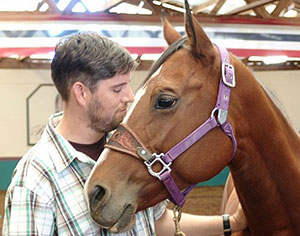Feline Upper Respiratory Infection
 Get More Pet Tips
Get More Pet Tips
Content provided Pet Talk with Dr. B is meant for educational purposes on health care and medical issues that may affect pets and should never be used to replace professional veterinary care from a licensed veterinarian. This site and its services do not constitute the practice of any veterinary medical health care advice, diagnosis or treatment.
Feline Upper Respiratory Infection:
Share This Everywhere!
The most common cause of sneezing in cats is an upper respiratory infection. Feline upper respiratory infections can develop from a single agent or can be a mixed infection as well. The most commonly involved agents are feline herpes virus (FHV-1), feline calici virus (FCV), and the bacterial agents Bordetellabrochiseptica, Chlamydophilafelis, and Mycoplasma. FHV-1 and FCV are responsible for 90 percent of feline upper respiratory infections. The disease is normally spread from infected secretions, either airborne or through shared objects among affected cats.
The common clinical signs of an upper respiratory infection seen in cats are sneezing, nasal discharge, runny eyes, cough, oral or nasal ulcers, and fever. A tentative diagnosis is often made from the clinical signs (sneezing or runny eyes) and history (recently adopted from a shelter, recent stressful event, exposure to other outdoor cats). Specific tests involving conjunctival scrapings, oral swabs, and samples from the trachea can be used to identify the organisms. More serious conditions, such as pneumonia and other generalized signs, can occur with complicated infections. Chest X-rays may need to be done if pneumonia is suspected in a cat.
Most upper respiratory infections will run their course and be resolved after 7-10 days, regardless of treatment. Even though 90 percent of these cases are viral in origin, many cats are still placed on antibiotics to prevent secondary bacterial infections. More serious infections can cause loss of appetite, lethargy, or fever, and these patients may need to be hospitalized to receive fluids and intravenous medications.
Another important consequence to consider is that infections with herpes virus are permanent and recurring. Episodes in affected cats may recur, especially after stressful events such as boarding or introducing another member to your household. Oftentimes the symptoms will become less and less severe as the cat matures and may not be noticeable to the owner.
The prognosis is good in most cats with appropriate supportive care. However, the disease can be life threatening in young kittens, older cats, and nursing mothers. Careful steps also must be taken in order to prevent the spread of the disease among cats by having your cat vaccinated and isolating clinically ill cats. Since the disease is also spread by contaminated objects, it is also important to disinfect all contaminated bowls, litter boxes, toys, and other objects with a diluted (1:32) bleach solution with water.



